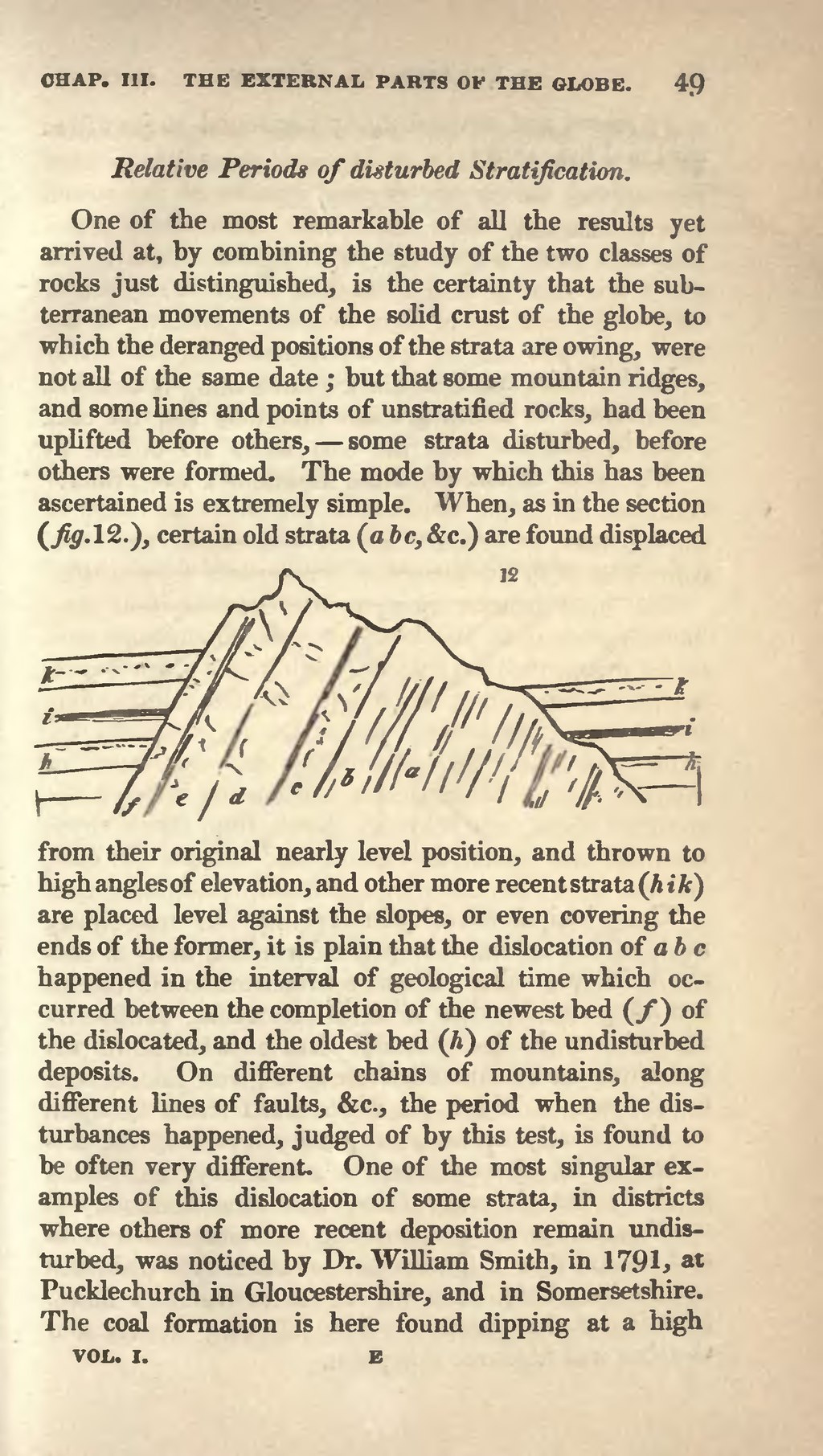Relative Periods of disturbed Stratification.
One of the most remarkable of all the results yet arrived at, by combining the study of the two classes of rocks just distinguished, is the certainty that the subterranean movements of the solid crust of the globe, to which the deranged positions of the strata are owing, were not all of the same date; but that some mountain ridges, and some lines and points of unstratified rocks, had been uplifted before others,—some strata disturbed, before others were formed. The mode by which this has been ascertained is extremely simple. When, as in the section (fig. 12.), certain old strata (a, b, c, &c.) are found displaced

from their original nearly level position, and thrown to high angles of elevation, and other more recent strata (h i k) are placed level against the slopes, or even covering the ends of the former, it is plain that the dislocation of a b c happened in the interval of geological time which occurred between the completion of the newest bed (f) of the dislocated, and the oldest bed (h) of the undisturbed deposits. On different chains of mountains, along different lines of faults, &c., the period when the disturbances happened, judged of by this test, is found to be often very different. One of the most singular examples of this dislocation of some strata, in districts where others of more recent deposition remain undisturbed, was noticed by Dr. William Smith, in 1791, at Pucklechurch in Gloucestershire, and in Somersetshire. The coal formation is here found dipping at a high
